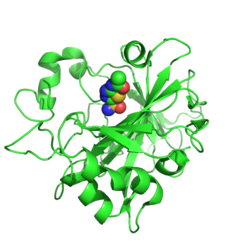| CA14 |
|---|
 |
|
|
| Identifiers |
|---|
| Aliases | CA14, CAXiV, carbonic anhydrase 14 |
|---|
| External IDs | OMIM: 604832; MGI: 1344341; HomoloGene: 69105; GeneCards: CA14; OMA:CA14 - orthologs |
|---|
|
|
|
|
| RNA expression pattern |
|---|
| Bgee |
| Human | Mouse (ortholog) |
|---|
| Top expressed in |
-
retinal pigment epithelium
C1 segment
substantia nigra
Epithelium of choroid plexus
vastus lateralis muscle
ventricular zone
corpus callosum
embryo
apex of heart
Skeletal muscle tissue of rectus abdominis
|
|
| Top expressed in |
-
retinal pigment epithelium
choroid plexus of fourth ventricle
Epithelium of choroid plexus
right kidney
epithelium of lens
epiblast
interventricular septum
stria vascularis
cardiac muscle tissue of left ventricle
muscle of thigh
|
| | More reference expression data |
|
|---|
| BioGPS |
|
|---|
|
|
|
|
|
| Wikidata |
|
|


